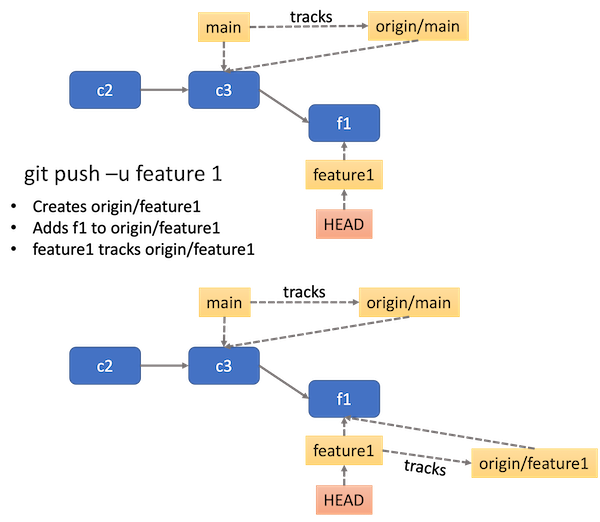

Activity: What's wrong with this API reference topic.Inspect the JSON from the response payload.Developer Documentation Trends: Survey Results.

If you liked this tutorial, I also talk about topics like this on Twitter, and write about them on my site. You can use it to create new branches, checkout a branch, checkout specific commits, and more. The git checkout command is a useful and multi-purpose command. If you instead want to keep your changes and continue from here, you can use git switch -c to create a new branch from this point. You can use the git switch - command to undo any changes you make and return to your previous branch.
 Work from here and start a new branch from this point. Experiment and then throw away your changes by returning to your previous branch. Git wants to make sure that that is what you are intending, so it gives you a "free space" of sorts to experiment-as described by the output: You are in 'detached HEAD' state. The result of checking out a specific commit puts you in a "detached HEAD state."įrom the documentation: means simply that HEAD refers to a specific commit, as opposed to referring to a named branchīasically, the HEAD (one of Git's internal pointers that tracks where you are in the Git history) has diverted from the known branches, and so changes from this point would form a new pathway in the Git history. Note: You generally only need to use the first few characters of the SHA-as the first four or five characters of the string are most likely unique across the project. Turn off this advice by setting config variable tachedHead to false If you want to create a new branch to retain commits you create, you mayĭo so (now or later) by using -c with the switch command. State without impacting any branches by switching back to a branch. You can look around, make experimentalĬhanges and commit them, and you can discard any commits you make in this To checkout a specific commit, you just need to pass the commit's SHA as the parameter to git checkout: (my-feature)$ git checkout 035a128d2e66eb9fe3032036b3415e60c728f692 A SHA is a unique identifier that is generated for each commit. On the first line of each commit after the word commit is a long string of characters and numbers: 94ab1fe28727. One way to find the SHA of a commit is to view the Git log. To checkout or switch to a specific commit, you can also use git checkout and pass the SHA of the commit instead of a branch name.Īfter all, branches are really just pointers and trackers of specific commits in the Git history.
Work from here and start a new branch from this point. Experiment and then throw away your changes by returning to your previous branch. Git wants to make sure that that is what you are intending, so it gives you a "free space" of sorts to experiment-as described by the output: You are in 'detached HEAD' state. The result of checking out a specific commit puts you in a "detached HEAD state."įrom the documentation: means simply that HEAD refers to a specific commit, as opposed to referring to a named branchīasically, the HEAD (one of Git's internal pointers that tracks where you are in the Git history) has diverted from the known branches, and so changes from this point would form a new pathway in the Git history. Note: You generally only need to use the first few characters of the SHA-as the first four or five characters of the string are most likely unique across the project. Turn off this advice by setting config variable tachedHead to false If you want to create a new branch to retain commits you create, you mayĭo so (now or later) by using -c with the switch command. State without impacting any branches by switching back to a branch. You can look around, make experimentalĬhanges and commit them, and you can discard any commits you make in this To checkout a specific commit, you just need to pass the commit's SHA as the parameter to git checkout: (my-feature)$ git checkout 035a128d2e66eb9fe3032036b3415e60c728f692 A SHA is a unique identifier that is generated for each commit. On the first line of each commit after the word commit is a long string of characters and numbers: 94ab1fe28727. One way to find the SHA of a commit is to view the Git log. To checkout or switch to a specific commit, you can also use git checkout and pass the SHA of the commit instead of a branch name.Īfter all, branches are really just pointers and trackers of specific commits in the Git history. Update a branch from master git how to#
(my-feature)$ How to checkout a specific commit There is also a handy shortcut for returning to the previous branch you were on by passing - to git checkout instead of a branch name: (my-feature)$ git checkout. To switch to an existing branch, you can use git checkout again (without the -b flag) and pass the name of the branch you want to switch to: (my-feature)$ git checkout master How to switch to an existing branch in Git Here you can see a new branch created called my-feature which was branched off of master. The new branch's history will start at the current place of the branch you "branched off of."Īssuming you are currently on a branch called master: (master)$ git checkout -b my-feature This will create a new branch off of the current branch. To create a new branch in Git, you use the git checkout command and pass the -b flag with a name. To do this, you can use the git checkout command. Switching branches is something you'll need to do often in Git.







 0 kommentar(er)
0 kommentar(er)
